Archives
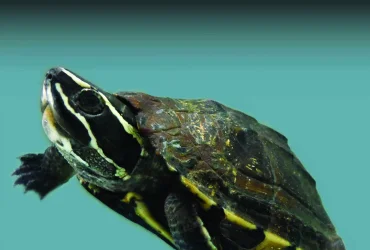 v8i1.212
v8i1.212ISSN: 1800-427X (print)
eISSN: 1800-427X (online)
DOI:10.47605/tapro.v8i1.212
Submitted date: 24 October 2014
Accepted date: 24 March 2016
Published date: 26 March 2016
Pp. 24–32.
Herbarium collections of the Botany Department, Fergusson College, Pune, India
Ashish N. Nerlekar
*E-mail: ashishadmirerofficus@gmail.com
Herbaria provide researchers with several services and opportunities, including the identification of specimens, the preservation of voucher and type specimens and as teaching aids. They also form the basis for research including the preparation of floras and monographs. Further, herbaria are of value as they can help in mapping the geographical distribution of species, the establishment of ecological relationships, information on ethnobotanical uses, and as a resource for phytochemical analyses
Section Editor: Henry Noltie
eISSN: 1800-427X (online)
DOI:10.47605/tapro.v8i1.212
Submitted date: 24 October 2014
Accepted date: 24 March 2016
Published date: 26 March 2016
Pp. 24–32.
Herbarium collections of the Botany Department, Fergusson College, Pune, India
Ashish N. Nerlekar
*E-mail: ashishadmirerofficus@gmail.com
Herbaria provide researchers with several services and opportunities, including the identification of specimens, the preservation of voucher and type specimens and as teaching aids. They also form the basis for research including the preparation of floras and monographs. Further, herbaria are of value as they can help in mapping the geographical distribution of species, the establishment of ecological relationships, information on ethnobotanical uses, and as a resource for phytochemical analyses
Section Editor: Henry Noltie
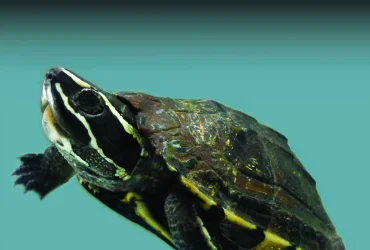 v8i1.211
v8i1.211ISSN: 1800-427X (print)
eISSN: 1800-427X (online)
DOI:10.47605/tapro.v8i1.211
Submitted date: 15 April 2015
Accepted date: 15 March 2016
Published date: 26 March 2016
Pp. 21–23.
27 years: the longest longevity and residency record for northern Indian Ocean blue whales
Asha de Vos
*E-mail: asha.devos@lincoln.oxon.org
The blue whale population using the waters around Sri Lanka is little studied and considered a subpopulation of pygmy blue whales (Balaenoptera musculus indica Blyth, 1859) that largely remain in the waters of the northern Indian Ocean with a portion remaining resident around Sri Lanka throughout the year. Blue whales are the most commonly observed baleen whales in Sri Lankan waters.
Section Editor: Phillip Clapham
eISSN: 1800-427X (online)
DOI:10.47605/tapro.v8i1.211
Submitted date: 15 April 2015
Accepted date: 15 March 2016
Published date: 26 March 2016
Pp. 21–23.
27 years: the longest longevity and residency record for northern Indian Ocean blue whales
Asha de Vos
*E-mail: asha.devos@lincoln.oxon.org
The blue whale population using the waters around Sri Lanka is little studied and considered a subpopulation of pygmy blue whales (Balaenoptera musculus indica Blyth, 1859) that largely remain in the waters of the northern Indian Ocean with a portion remaining resident around Sri Lanka throughout the year. Blue whales are the most commonly observed baleen whales in Sri Lankan waters.
Section Editor: Phillip Clapham
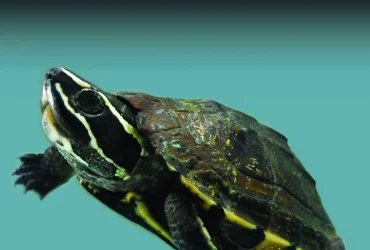 v8i1.210
v8i1.210ISSN: 1800-427X (print)
eISSN: 1800-427X (online)
DOI:10.47605/tapro.v8i1.210
Submitted date: 3 November 2015
Accepted date: 3 March 2016
Published date: 26 March 2016
Pp. 10–20.
FEEDING HABITS OF PACK LIVING DHOLE (Cuon alpinus) IN A DRY DECIDUOUS FOREST OF EAST JAVA, INDONESIA
Sandy Nurvianto*, Rury Eprilurahman, Muhammad Ali Imron & Sven Herzog
*Corresponding author. E-mail: sandy_nurvi@yahoo.com
Abstract
We conducted a study on the feeding habits of dholes in the Baluran National Park, Indonesia. Scat analysis was employed to identify the prey consumed. In total, 54 scats were collected across the park during the dry season of 2013 and analyzed to identify the prey of this species; at least 20 prey species were identified. Ungulates are the most important prey, estimated to contribute more than 95 % of the biomass consumed by dholes in BNP. Efforts to ensure availability of ungulates and to secure habitat will be the key to the dhole’s conservation in Java.
Key words : Baluran National Park, conservation, food, predator, prey, scat analysis, ungulates
Section Editor: Colin Groves
eISSN: 1800-427X (online)
DOI:10.47605/tapro.v8i1.210
Submitted date: 3 November 2015
Accepted date: 3 March 2016
Published date: 26 March 2016
Pp. 10–20.
FEEDING HABITS OF PACK LIVING DHOLE (Cuon alpinus) IN A DRY DECIDUOUS FOREST OF EAST JAVA, INDONESIA
Sandy Nurvianto*, Rury Eprilurahman, Muhammad Ali Imron & Sven Herzog
*Corresponding author. E-mail: sandy_nurvi@yahoo.com
Abstract
We conducted a study on the feeding habits of dholes in the Baluran National Park, Indonesia. Scat analysis was employed to identify the prey consumed. In total, 54 scats were collected across the park during the dry season of 2013 and analyzed to identify the prey of this species; at least 20 prey species were identified. Ungulates are the most important prey, estimated to contribute more than 95 % of the biomass consumed by dholes in BNP. Efforts to ensure availability of ungulates and to secure habitat will be the key to the dhole’s conservation in Java.
Key words : Baluran National Park, conservation, food, predator, prey, scat analysis, ungulates
Section Editor: Colin Groves
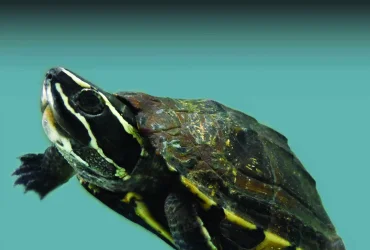 v8i1.209
v8i1.209ISSN: 1800-427X (print)
eISSN: 1800-427X (online)
DOI:10.47605/tapro.v8i1.209
Submitted date: 21 January 2016
Accepted date: 18 February 2016
Published date: 26 March 2016
Pp. 1–9.
A NEW SNAIL-EATING TURTLE OF THE GENUS Malayemys LINDHOLM, 1931 (GEOEMYDIDAE) FROM THAILAND AND LAOS
Montri Sumontha, Timothy R. Brophy, Kirati Kunya, Suthep Wiboonatthapol & Olivier S.G. Pauwels*
*Corresponding author. E-mail: osgpauwels@yahoo.fr
Abstract
We describe a snail-eating turtle, Malayemys isan sp. nov., from the Mekong River Basin in northeastern Thailand (Nong Bua Lamphu, Nong Khai and Udon Thani provinces) and the adjacent Vientiane area in Laos. The new species is readily distinguishable from M. subtrijuga by its two (vs. six to nine) nasal stripes, and from both M. subtrijuga and M. macrocephala by its thin, often discontinuous, infraorbital stripe that never reaches the loreal seam. This geographically-restricted new species is sold in several food markets throughout the species‟ distribution and is in urgent need of conservation measures.
Key words : Aquatic ecosystems, biodiversity, herpetofauna, Mekong, snail-eating turtle
Section Editor: Thasun Amarasinghe
eISSN: 1800-427X (online)
DOI:10.47605/tapro.v8i1.209
Submitted date: 21 January 2016
Accepted date: 18 February 2016
Published date: 26 March 2016
Pp. 1–9.
A NEW SNAIL-EATING TURTLE OF THE GENUS Malayemys LINDHOLM, 1931 (GEOEMYDIDAE) FROM THAILAND AND LAOS
Montri Sumontha, Timothy R. Brophy, Kirati Kunya, Suthep Wiboonatthapol & Olivier S.G. Pauwels*
*Corresponding author. E-mail: osgpauwels@yahoo.fr
Abstract
We describe a snail-eating turtle, Malayemys isan sp. nov., from the Mekong River Basin in northeastern Thailand (Nong Bua Lamphu, Nong Khai and Udon Thani provinces) and the adjacent Vientiane area in Laos. The new species is readily distinguishable from M. subtrijuga by its two (vs. six to nine) nasal stripes, and from both M. subtrijuga and M. macrocephala by its thin, often discontinuous, infraorbital stripe that never reaches the loreal seam. This geographically-restricted new species is sold in several food markets throughout the species‟ distribution and is in urgent need of conservation measures.
Key words : Aquatic ecosystems, biodiversity, herpetofauna, Mekong, snail-eating turtle
Section Editor: Thasun Amarasinghe
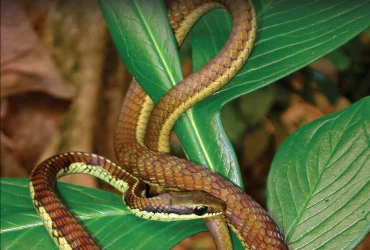 v3i2.57
v3i2.57ISSN: 1800-427X (print)
eISSN: 1800-427X (online)
DOI:10.47605/tapro.v3i2.57
Submitted date: 29 July 2011
Accepted date: 29 October 2011
Published date: 20 December 2011
Pp. 110–111.
Unusual affiliative behaviour in orang-utans (Pongo pygmaeus) - Sabah, Malaysia
Lee E. Harding*
*E-mail: harding@sciwrite.ca
Adult male and female orang-utans are usually described as solitary (Delgado Jr & Van Schaik, 2000; Galdikas, 1985; Poole, 1987; Rodman & Mitani, 1987; Weiss et al., 2006), the female providing the only infant care, as far as is known. Adult males, which are twice the size of adult females, do not associate with females except for sex; adult males may associate with subadult males, but not for companionship: it usually involves competition for a receptive female
Section Editor: Colin Groves
eISSN: 1800-427X (online)
DOI:10.47605/tapro.v3i2.57
Submitted date: 29 July 2011
Accepted date: 29 October 2011
Published date: 20 December 2011
Pp. 110–111.
Unusual affiliative behaviour in orang-utans (Pongo pygmaeus) - Sabah, Malaysia
Lee E. Harding*
*E-mail: harding@sciwrite.ca
Adult male and female orang-utans are usually described as solitary (Delgado Jr & Van Schaik, 2000; Galdikas, 1985; Poole, 1987; Rodman & Mitani, 1987; Weiss et al., 2006), the female providing the only infant care, as far as is known. Adult males, which are twice the size of adult females, do not associate with females except for sex; adult males may associate with subadult males, but not for companionship: it usually involves competition for a receptive female
Section Editor: Colin Groves
Hubungi Kami
The ultimate aim of the journal is to provide an effective medium for communication of the latest and best scientific information.
Copyright © 2020 Taprobanica. All Rights Reserved
Jasa Pembuatan Website by IKT




